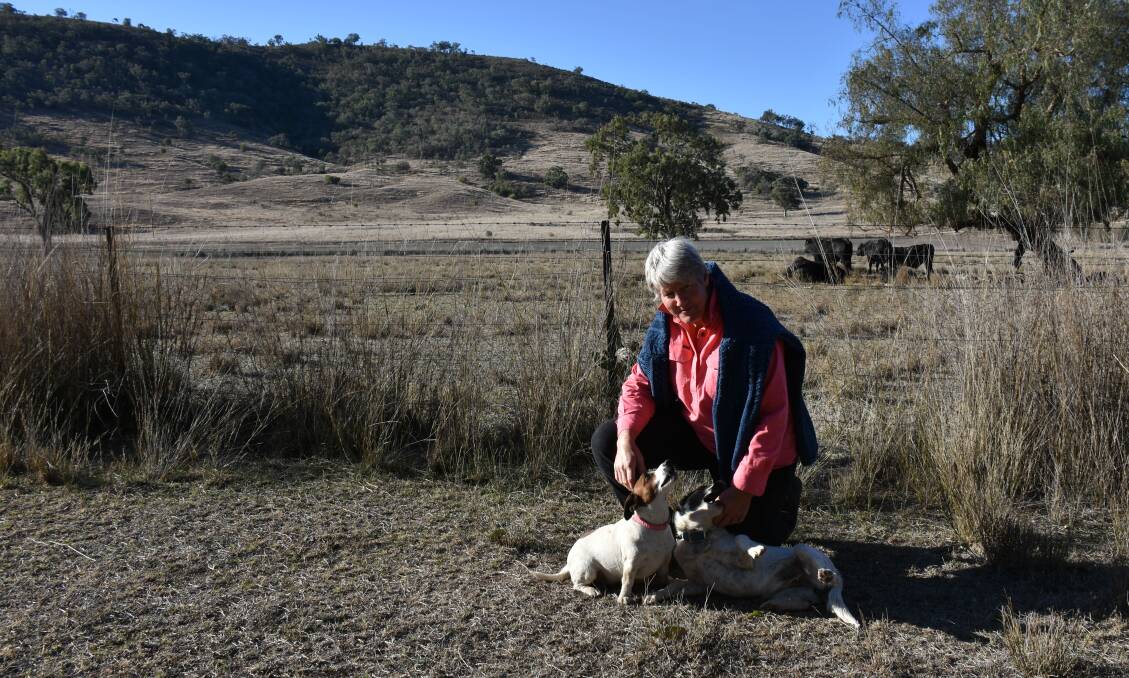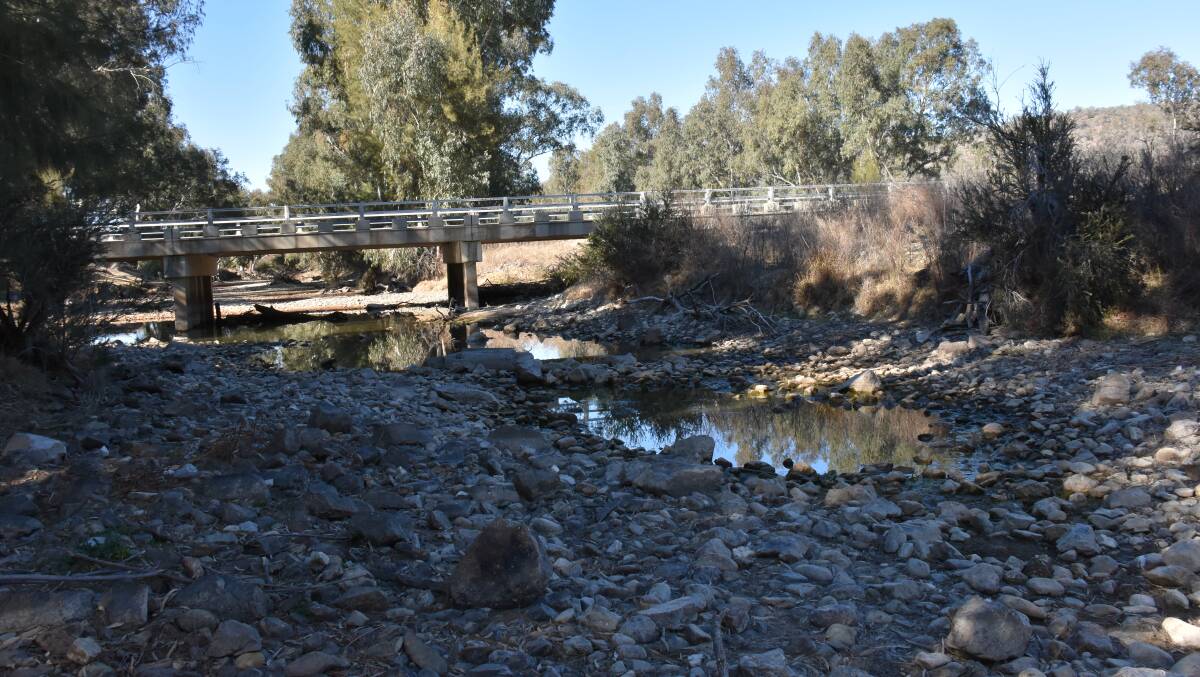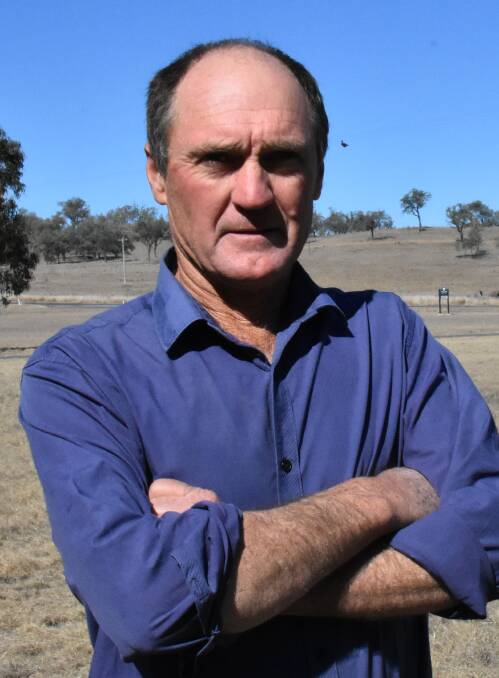
The district awoke to a sparkling winter’s morning on Monday after receiving an inch or so of rain over the weekend. But while it was enough to wash off the dust and even leave a few puddles, it’s only a brief reprieve from the drought conditions being endured by farmers in the west of Tenterfield Shire.
Subscribe now for unlimited access.
or signup to continue reading
Sandra Smith runs hay and cattle property Trenayr on the Mole River, but there’s no hay being produced and few cattle on the ground as she rides out the drought. In fact she’s running the same number of cattle now as when the property also comfortably carried an additional 3000 sheep in better times.
READ ALSO:
She and her neighbours are also carrying increasingly-large mobs of kangaroos, exacerbating the drought problem. In her case, she thought rested paddocks that haven’t carried stock for two years could be brought into rotation to help with drought feed, only to discover she’d been beaten to it.
“I went out to my southernmost paddocks to assess how much feed there was out there so that I might put cattle out there when it rains enough,” she said.
“There is nothing there. It looks worse than when I had sheep five or six years ago, and there is roo poo everywhere. So much for letting my property recover from 100 years of sheep grazing.”
Ms Smith said Mingoola primary producers received 20-30 millimetres of rain over the weekend.
“Certainly not drought-breaking but very much morale boosting!
“And so good to get some water in our tanks.”
She’s concerned about the state of the Mole River, with her last irrigation from it back in February.
“It’s practically unheard of for the river not to run for the whole winter,” she said.
In her 30-odd years on the farm this is the first year there’s no oats to feed off.
“We’ve always had something,” she said.
The property doesn’t look too bad thanks to the very light stocking of cattle, preserving standing dry feed to hopefully see them through.
“We should be able to manage, as long as the molasses continues.”
Kangaroos have also eaten out the lucerne, which would normally be receiving irritation now for the first cut. When that cut will be now depends on the weather.
“It will be at least a month after the river starts flowing,” Ms Smith said.
“We need three inches of soaking rain, or it won’t run for long. There are lots of dams to be filled before it runs into the river.”

Dams on Trenayr that were cleaned out last spring are now dry.
Last season’s crop yields were already drought-affected. She did four cuts over the past summer, down for the usual six.
She’s finding it necessary to dig deeper into water holes to pump water for the house, and when that hole dries up it means running miles of polypipe to the next ‘puddle’. She finds it hard to imagine how people on properties with no water holes are coping.
Ms Smith – who’s also secretary of the Farmers Association’s Tenterfield branch, said government bodies are allocating money but making it difficult to access it.
“Dropping LLS (Local Land Services) rates would help everybody,” she said.
“The bigger the property, the bigger the saving.”
Over at the Moorabinda property of Phil and Julia Harpham, the couple thought they had destocked sufficiently when they sold off a third of their cattle numbers in May/June, but Mrs Harpham now thinks cutting down to a half may have been better.
Reedy Creek runs through their property, when it does run. They’ve had dams cleaned out but agree that this season’s conditions go beyond any level of drought-preparedness.
“You have to be prepared for the worse but once you start feeding, unless it’s breeding stock it’s hard to be economically-viable,” Mrs Harpham said.
“The government could be doing more that’s helpful when people are forced to sell.”

Andrew Hynes is also lightening the load on his 2500 hectare property on Springfield Road as the shortage of dry feed bites. He has a 16-hectare irrigated block of forage oats on the river but it’s struggling for a drink since the Mole River stopped flowing.
He’s moving stock on and off the block to avoid chewing it out.
“I’ve reduced the cattle numbers five times, and I have another lot booked to go,” he said.
He sent the last lot directly to Bindaree Beef over the grid at Inverell, and was pleasantly surprised with the return he got, averaging around $700.
“I was expecting half of that,” he said.
He appreciates the grid selling method where he gets paid on meat and fat cover and MSA qualities of individual beasts, in contrast to selling through the saleyards.
“They just look at the whole yard and you might get 60 cents a kilo,” he said.
The need to maximise returns are paramount as he continues feeding remaining stock. Sourcing hay has become an issue but he managed to secure a supply of cotton seed early, at a reasonable price.
“I don’t know where you get hay from now,” he said.
“We’re stretching what we’ve got as far as we can. We’ll just have to keep selling stock and look after the cows and heifers. That’s all you can do.”
Back at Trenayr Miss Smith fears the impact of the drought persisting through the coming summer, with rain predicted for October being little comfort.
“October is not our growing season,” she said.
“Summer’s going to be touch-and-go the whole season.
“If the river’s not running for half of the summer, it’s going to be pretty awful.”

